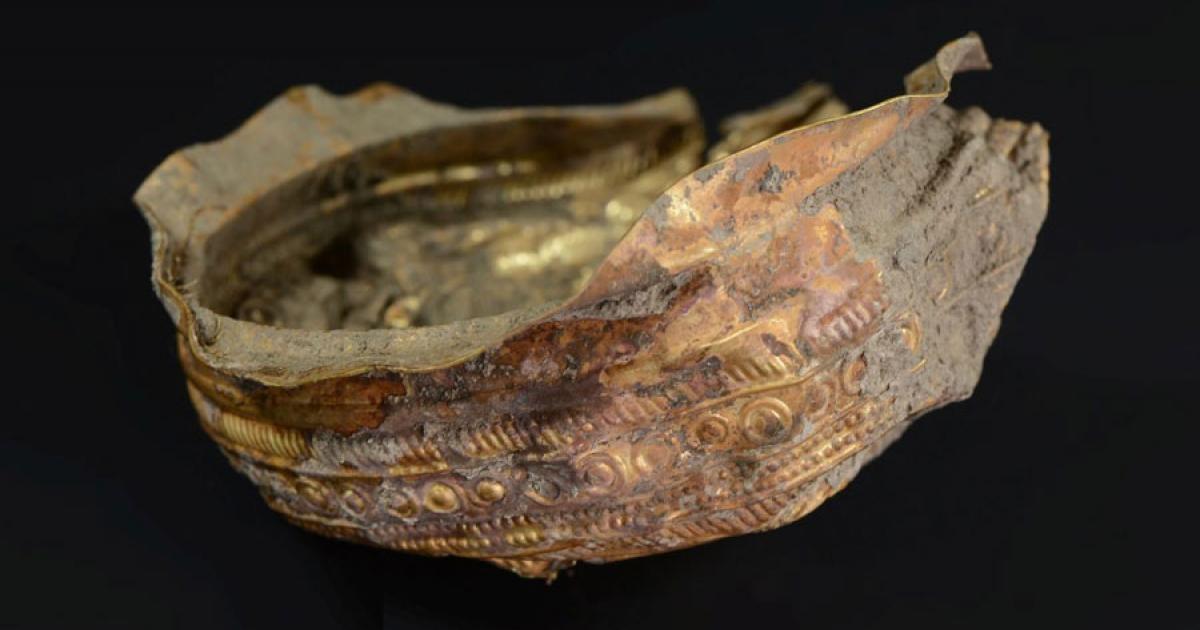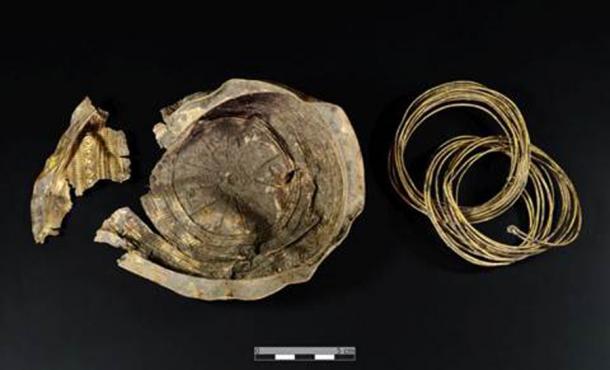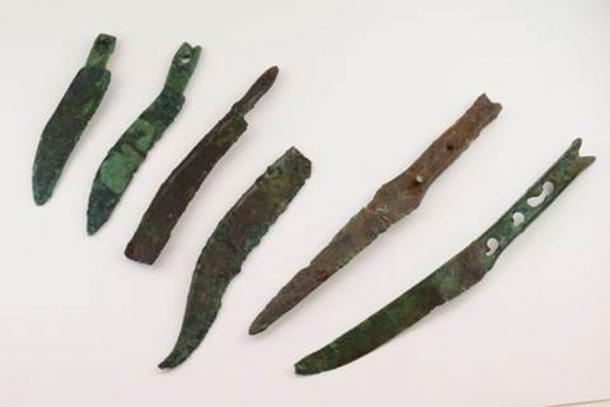
Archaeological El Dorado: Stunning Golden Sun Bowl Found in Austria
“A discovery of a lifetime” is what archaeologist Dr. Michal Sip termed the find: a golden sun bowl dated to 3,000 years ago, unearthed during ongoing excavations in a prehistoric settlement in Ebreichsdorf, Austria.
Work at this ancient settlement dated to 1300-1000 BC, has been in full flow since September 2019. Researchers at the site are focused on the “urn field culture” found here, a reference to their funeral rites and ceremonial cremation, reports Heritage Daily.
The Golden Bowl with the Sun Motif
This latest find is that of a golden bowl, decorated with a beautiful motif that depicts the rays of the sun. The bowl is 20cm (7.8”) in diameter and 5cm (2”) high, and made of a very thin sheet metal consisting of 90% gold, 5% silver, and 5% copper.
Inside there is coiled golden wire wrapped around organic material clumps, originally fabric sewn with gold thread. This is possibly the remnants of decorative scarves attached to the bowl, used during the sun worship ceremonies and rituals.

The sun rays on the bowl interior, and the wire found in the bowl (Copyright Andreas Rausche)
Archaeologist Dr. Michal Sip, from Novetus, termed it a kind of “archaeological Eldorado” and considered it one of the most important archaeological discoveries ever made in Austria. A first of its kind discovery in this region, only 30 such bowls have been scattered across the entirety of the vast European continent. "This is the first find of this type in Austria, and the second to the east of the Alpine line," said the archaeologist.
- Bronze Age Mining in Europe Dates Back Earlier than Previously Thought
- Will Discovery of Ancient Tombs in Poland Halt a Proposed Coal Mine?
He added that single vessels of this kind have been found in France, Switzerland and Spain, but the production probably occurred in northern Germany, Scandinavia, and Denmark, reports PAP. The “golden” finds, particularly the golden bowl, indicate extensive trade relations between western and northern Europe.
A Routine Excavation
The excavation was routine, and the discoveries purely accidental. At this site, 30 kilometers (18.6 miles) south of Vienna, the Austrian Federal Railways (the OBB) plans to build a railway station. These plans required an archaeological survey before they could be approved, prompting archaeologists to check what was underground.
Franz Bauer, CEO of ÖBB-Infrastruktur AG, stated that archaeological excavation work as part of "such a major project" is also required as part of the environmental impact assessment. "Building new things and preserving the old is one of our premises when implementing construction projects."
Apart from the golden bowl, in the 70 hectares (173 acres) excavated, 5,000 finds have been listed in total, including hundreds of items made of bronze items, and many dozens made of gold. This includes the remains of residential, work, and storage buildings.
These finds have sparked debate amongst historians, who are now asking probing questions into the living conditions and life of the late Bronze Age. “We now have a very clear picture of this prehistoric settlement from 3,000 years ago. We were able to reconstruct where the economic area was and where the residential area was,” Dr. Sip told noe.ORF.at.
- The Dark Tale behind the Golden Bowl of Hasanlu
- Bombshell Study Calls Astronomical Theories of the Nebra Sky Disk “Obsolete”
The southern boundary had a dry riverbed, 25 meters (82 feet) wide, which was either a swamp or a seasonal, flowing waterbody. This entire stretch has revealed pins, daggers, knives, all of which were in great condition. This indicates that it was definitely not a refuse pit.

Weapon blades found at the site (Copyright Andreas Rausche / Novetus)
Hundreds of kilos of animal bones, clay vessels, and ceramic shells have also been found in this area of the site. This has led Dr. Sip and his colleagues to speculate that this swamp was likely part of the larger religious ceremony involving the sun.
The Bronze Age “Urn Field Culture”
The “urn field culture” community led a sedentary lifestyle, and were proficient in animal domestication and breeding, particularly that of sheep. Echoes of this culture survive in contemporary Poland with the Lusatian culture, centered around their famous settlement at Biskupin, in northern Poland.
"The unique phenomenon in this part of Europe is not only the numerous and valuable finds in the form of bronze and gold objects – but the fact that the settlement in Ebreichsdorf we discovered was so great", noted Dr. Sip.
The bowl will be placed on display at the Kunsthistorisches Museum in Vienna, with excavations to continue for the next six months.
Top image: The Golden Sun Bowl. Source: Copyright Andreas Rausche.
By Sahir Pandey
References
APA. 2021. Ebreichsdorf: 3,000 year old gold treasure discovered. Available at: https://www.vienna.at/ebreichsdorf-3-000-jahre-alter-goldschatz-entdeckt/7141826
Heritage Daily. 2021. “Discovery of a lifetime” golden sun bowl discovered in prehistoric settlement. Available at: https://www.heritagedaily.com/2021/10/discovery-of-a-lifetime-golden-sun-bowl-discovered-in-prehistoric-settlement/141559
ORF. 2021. Sensational find during construction work. Available at: https://noe.orf.at/stories/3123844/
Zdziebijowski, S. 2021. A unique golden bowl from before 3,000 was discovered years, with the theme of the sun. Available at: https://naukawpolsce.pap.pl/aktualnosci/news%2C89493%2Codkryto-unikatowa-zlota-mise-sprzed-3-tys-lat-z-motywem-slonca.html














